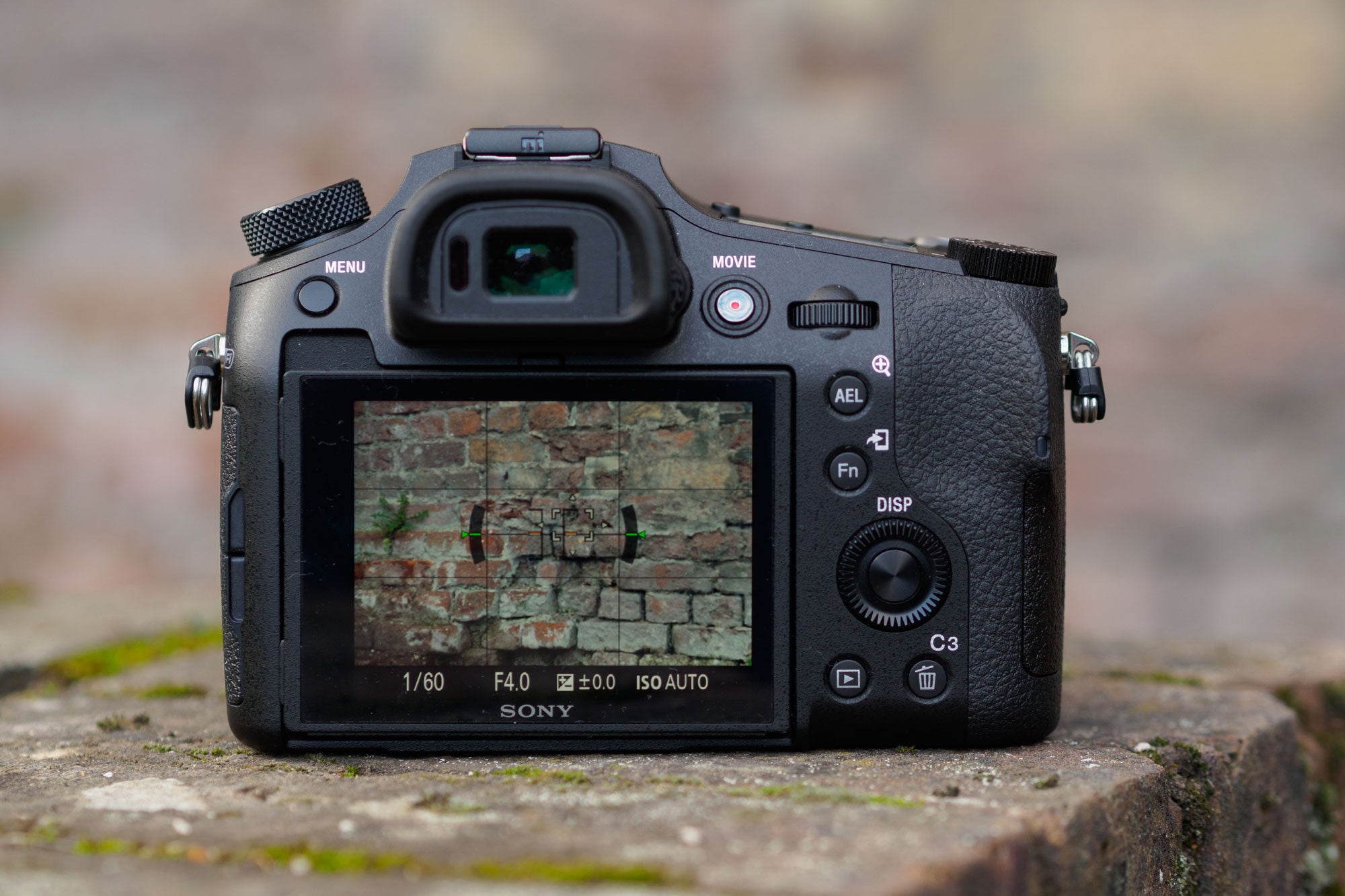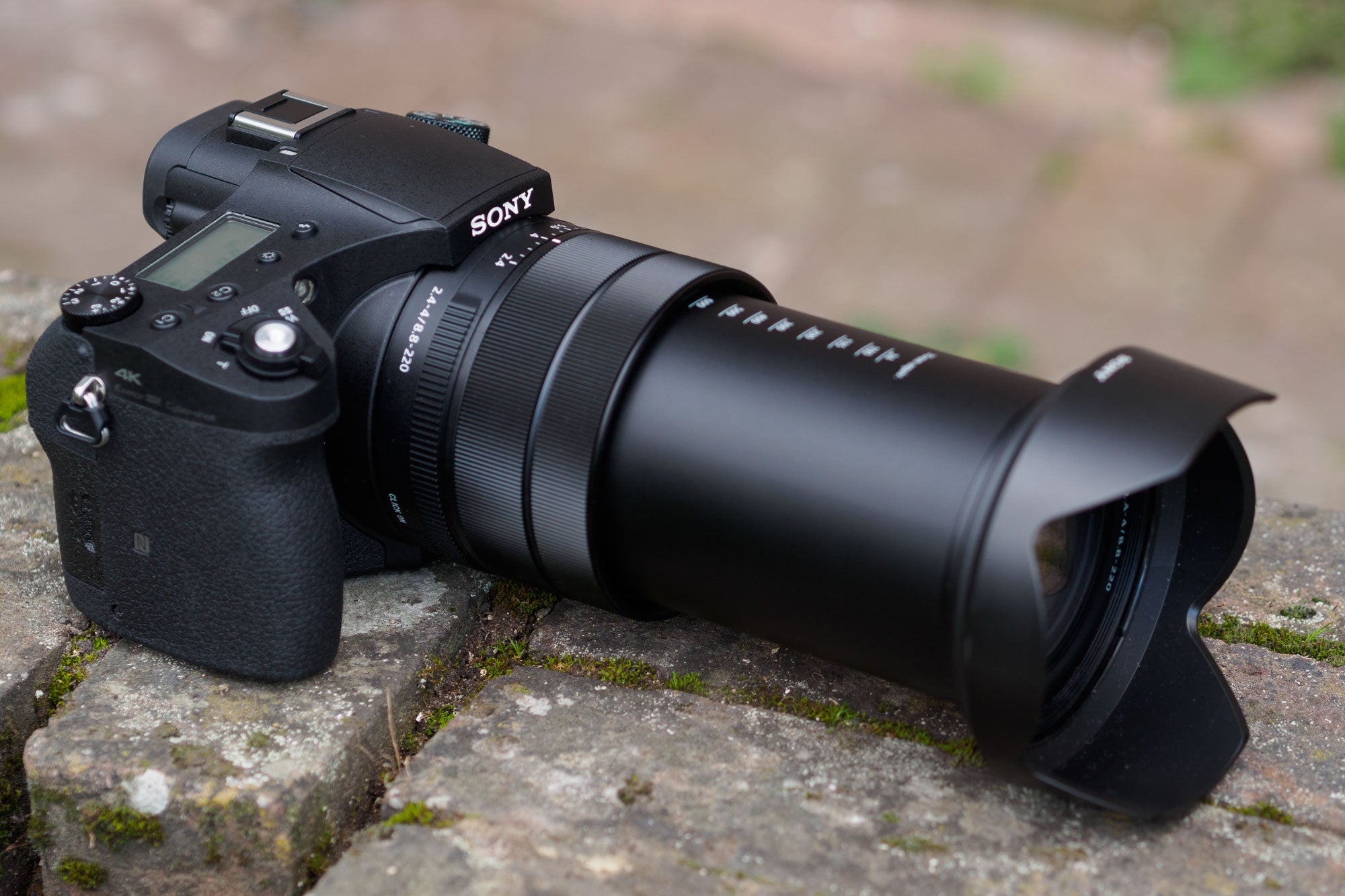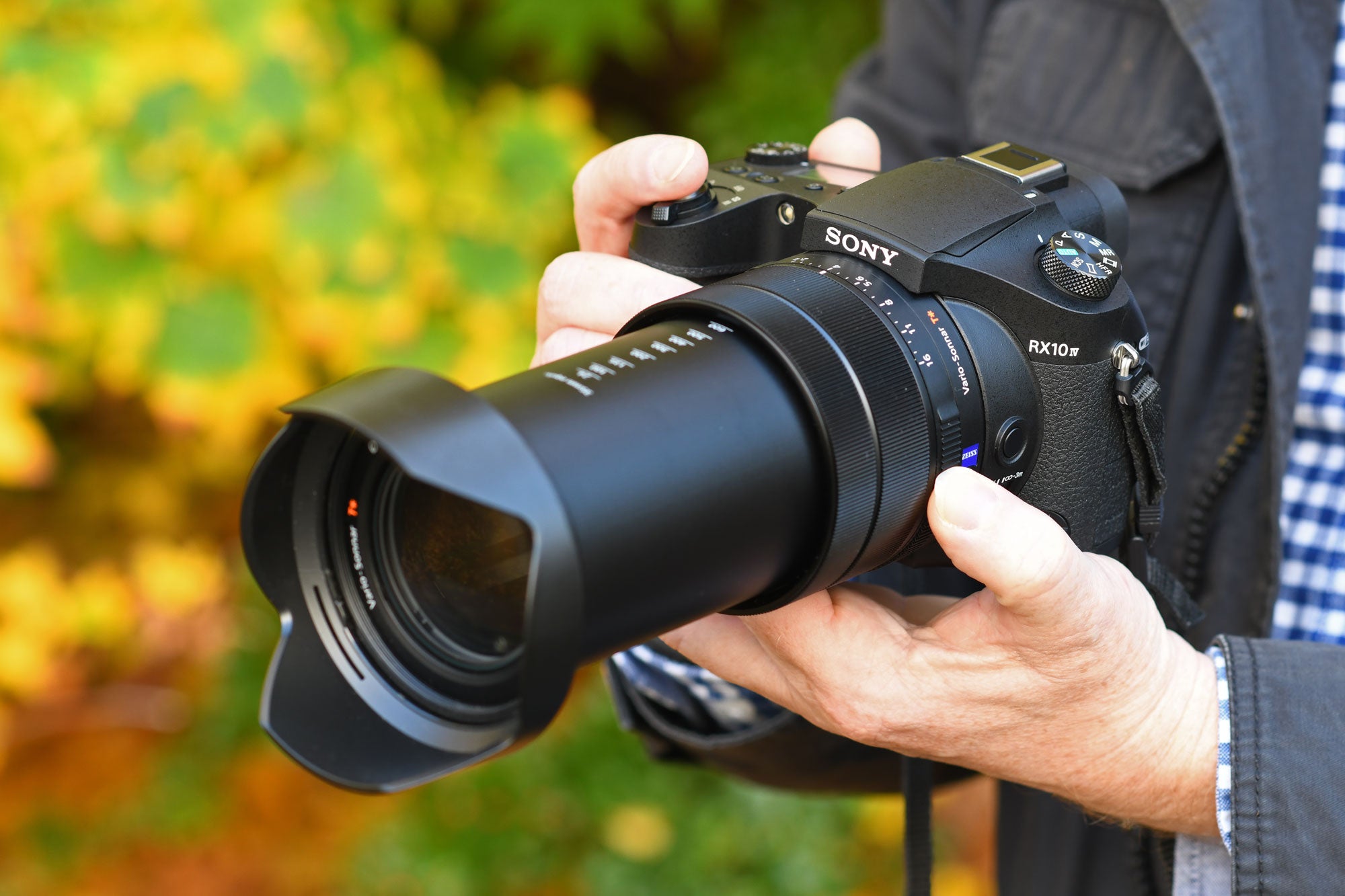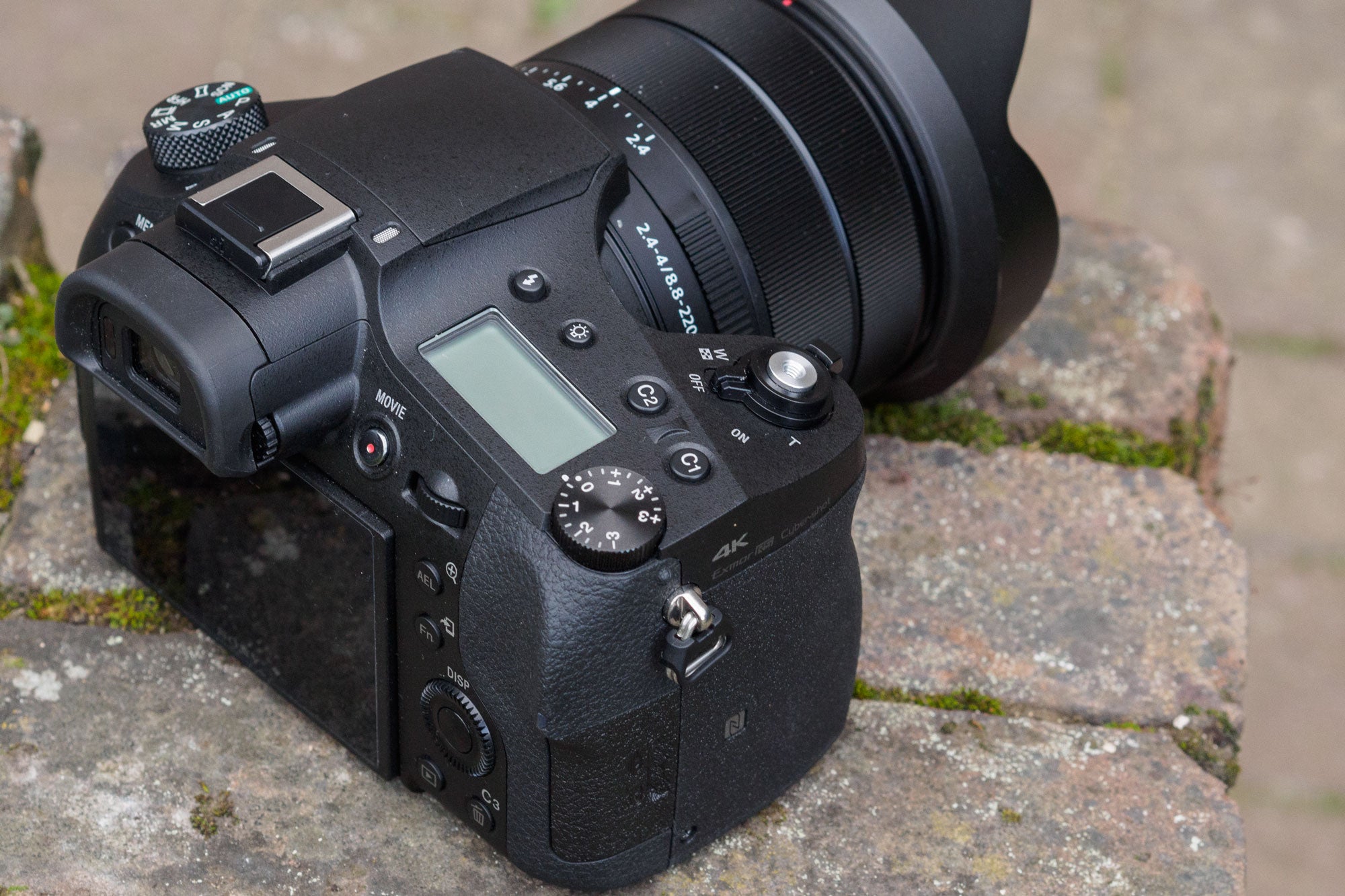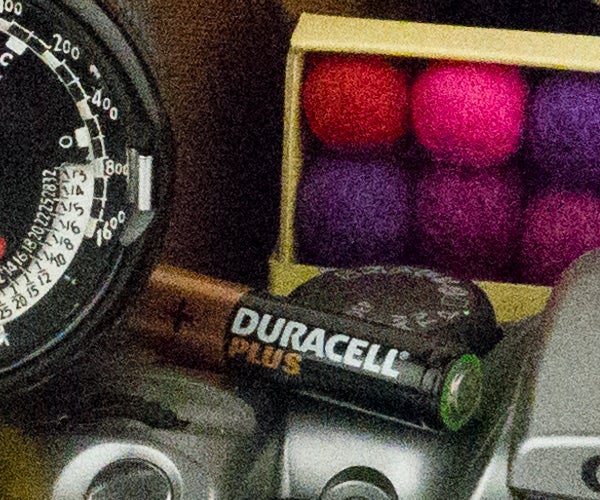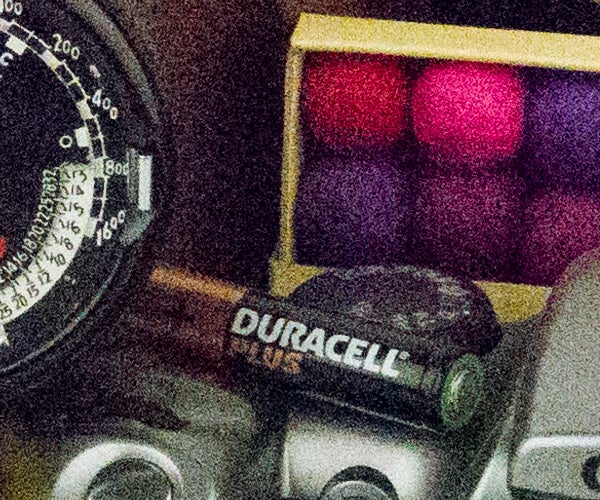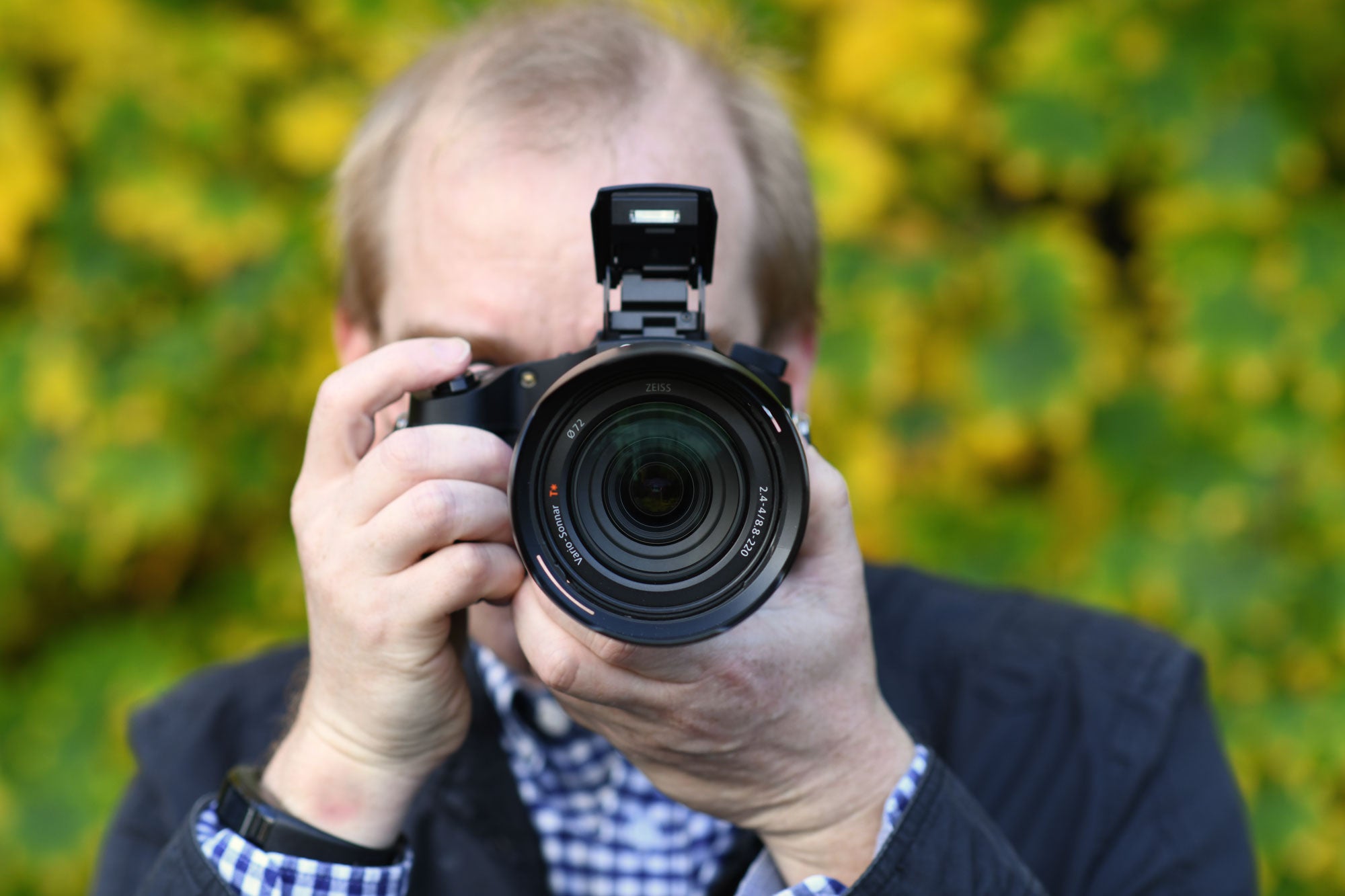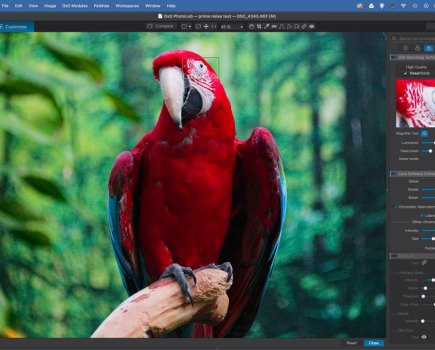What is the Sony Cyber-shot RX10 IV?
The Sony Cyber-shot RX10 IV is a premium all-in-one bridge camera with a 20-megapixel 1-inch sensor and a long-range 24-600mm equivalent zoom. Styled like a small DSLR, it costs £1799.
In the past, all-in-one bridge cameras have provided a means of getting a long zoom range in relatively compact and affordable package. But most have used tiny image sensors, which means that while they may have been designed to look like small DSLRs, their image quality has fallen a long way short.
That all changed with Sony’s launch of the original RX10 in 2013. By combining a much larger 1-inch-type 20-megapixel sensor with a 24-200mm equivalent f/2.8 zoom lens, it offered vastly improved image quality compared to previous bridge models – and not so far behind APS-C DSLRs.
Last year’s RX10 III made another big leap by adding a 24-600mm equivalent f/2.4-4 lens. This offered an immense zoom range suitable for shooting almost any subject, from grand landscapes to distant wildlife.
Now, with the RX10 IV, Sony has completely revised the internals, adding the stacked-CMOS sensor and Bionz X processor previously seen in its RX100 V pocket camera.
As a result, the RX10 IV gains mind-boggling speed, with the ability to shoot at 24fps with continuous autofocus. In terms of the numbers, no DSLR comes close, while the RX10 IV’s closest direct rival – the Panasonic Lumix DMC-FZ2000 – maxes out at half the speed. Even the fastest mirrorless model, Sony’s own Alpha 9, manages only 20fps with autofocus.
Naturally, you pay for all this technology, and the RX10 IV’s £1799 price tag is unprecedented for this type of camera. It’s also a chunky beast by bridge camera standards, with its 133 x 94 x 127mm body and 1095g weight larger than that of some entry-level DSLRs. The nearest SLR-based alternative for a similar price would probably be the Nikon D7500 with the Tamron 18-400mm zoom, however – and that’s a fair bit bigger still.
Getting all this capability in an all-in-one camera sounds too good to be true, but Sony has done a remarkable job recently of raising the bar of what’s technically possible. So does the RX10 IV actually deliver, and what are the trade-offs compared to using a DSLR or mirrorless camera?
Sony Cyber-shot RX10 IV – Features
The RX10 IV’s 20.1-megapixel Exmor RS sensor uses a stacked architecture, with on-chip memory and image processing enabling particularly high readout speeds. This allows a silent high-speed electronic shutter that practically eliminates subject distortion from rolling shutter artefacts, while offering speeds as high as 1/32,000sec – considerably faster than the 1/2000sec top speed of the conventional mechanical shutter.
Crucially, the sensor gains on-chip phase detection for autofocus, with 315 focus points that cover 65% of the image area. Sony’s high-density AF tracking technology allows the camera to cluster groups of small focus points around a subject that it detects to be moving for maximum accuracy.
You can allow the camera to choose the focus area on its own, or switch to flexible spot mode that allows you to specify the AF point yourself. Face detection is also available, with the ability to focus specifically on your subject’s eyes. Sony claims the focus speed is the fastest in camera history, at just 0.03 seconds.
Sony’s latest Bionz X processor provides the horsepower for the headline 24fps shooting mode, with a spectacular buffer of 110 RAW files, or 249 JPEGs. If you don’t such speed – and let’s face it, most of the time you won’t – the camera can be set to shoot at 10fps or 3.5fps. The sensitivity range runs from ISO 100-12,800, with extended ISO 64 and 80 options also available.
The 24-600mm equivalent Zeiss Vario-Sonnar T* zoom has a maximum aperture of f/2.4-4, but the drop-off through the zoom range is pretty abrupt. It hits f/2.8 at 28mm equivalent, f/3.2 at 35mm, f/3.5 at 60mm, and then holds f/4 from 100mm through to the 600mm end.
The aperture can be stopped down to f/16 in 1/3 steps, although in some modes it won’t go beyond f/11. On a 1-inch sensor you won’t want to go past f/8 anyway, for fear of excessive diffraction blur.
Not surprisingly, the lens is complex with its 18-element, 13-group design including eight extra-low dispersion (ED) glass elements and one super-ED element to minimise chromatic aberrations. Six aspheric elements are employed, of which two are made from ED glass. Sony says its built-in optical stabilisation allows hand-holding at shutter speeds up to 4 stops slower than would otherwise be possible without getting blurred images due to camera shake.
Close-up capability is decent. The lens can focus just 3cm from the front element at wide angle, dropping to 72cm at the tele end; at this point it offers approximately 2:1 equivalent magnification. Quirkily, though, the minimum range is rather longer in the middle of the zoom range, reaching 140cm at the 250mm position.
The lens also lacks a built-in ND filter. This is likely to be of concern to videographers who want to keep shutter speeds low for smooth-looking motion in bright light. They might be better served by the Panasonic FZ2000. However, screw-in filters can be mounted using a standard 72mm thread, and a bayonet-fit hood is supplied.
Sony has included a decent array of photographic features, including its auto-stitching Sweep Panorama mode alongside multi-shot noise reduction and high-dynamic-range modes. For beginners, there’s a small but sensible selection of subject-specific scene modes, together with a conventional full auto mode.
Quite a few common features are missing, however. These include in-camera RAW conversion, an intervalometer, time-lapse movie creation, or even multiple aspect ratios for stills shooting – you just get a choice of 3:2 or 16:9. On a camera this ambitious, these are pretty glaring omissions. Unlike some other models, the RX10 IV isn’t compatible with Sony’s add-on apps, so you can’t install additional features either.
Wi-Fi is built in, allowing remote control of the camera from a smartphone or tablet using Sony’s free PlayMemories Mobile app. This offers a decent level of manual control – but, oddly, doesn’t allow you to change the aperture remotely. Instead, it honours the position of the aperture ring, which would make more sense were it not for the fact that you can override the exposure compensation dial setting.

Sony’s PlayMemories Mobile app allows remote control of the RX10 IV from your smartphone
On a more positive note, it’s super-easy to send your favourite images to your phone for sharing, simply by pressing the Fn button during playback. It’s also possible to geo-tag your images as you shoot using your phone’s GPS, via the RX10 IV’s newly-added Bluetooth LE. It’s just a shame this connection can’t be used for other functions such as remote control, as it can on Canon cameras.
When it comes to video, Sony has provided a typically comprehensive set of options. The RX10 IV can record in 4K resolution (3840 x 2160px) at 25fps and at bit-rates of 100MBps or 50Mbps, while Full HD footage can be captured at a wide range of settings up to 100fps and 100MBps. Peaking and zebra pattern displays are available to aid focusing and exposure judgement, and Sony’s Picture Profiles are onboard. This includes S-Log gamma for easier colour grading post-production.
Both microphone and headphone sockets are built in for sound recording, and footage can be output to an external recorder over HDMI. The camera can even simultaneously output low-resolution proxy footage, enabling easier in-the-field editing using relatively low-powered devices such as smartphones. It’s also possible to extract 8-megapixel stills from 4K footage.
Sony has also included a dedicated slow-motion video mode, marked HFR (for High Frame Rate) on the mode dial. This allows you to record at 250, 500 or 1000fps, giving 5x, 10x or 20x slow motion, but with progressively decreasing pixel dimensions.
Its interface is distinctly non-intuitive, focus is fixed at the start of recording, and the cameras locks up for a while as it records the footage to card. Even so, this is a pretty addictive feature to have onboard for filming subjects such as wildlife.
Sony Cyber-shot RX10 IV – Build and handling
Thanks to its size and SLR-style design, the RX10 IV generally handles very well. Its handgrip is large and comfortable, while the large lens barrel nestles snugly in your left hand.
Unusually, with three control rings on the lens to control the aperture zoom and manual focus, shot-to-shot operation is spread evenly between your hands. Videographers will be pleased to find that the aperture ring can be set to click-less operation using a switch beneath the barrel. It’s also possible to choose which way around the two lens rings are assigned to zoom and focus, along with the direction they operate.
The exposure compensation dials falls perfectly beneath your right thumb, while a recessed dial on the back sets the shutter speed. On the front you’ll find a focus mode dial for switching between single-shot or continuous autofocus, along with an A mode that switches between the two if it detects subject movement. Here you can also access manual focus and Sony’s Direct Manual Focus mode, which allows full-time manual override of AF.
The shutter button falls naturally under your index finger, and has a conventional two-stage action with a half-press to activate autofocus. The power switch is placed behind it, with a zoom lever in front. It may seem odd that the camera has two zoom controllers, but it makes sense when you discover that they operate at different speeds.
The lever around the shutter button is ideal for quickly setting the right focal length, while the ring around the lens allows you to fine-tine composition precisely. Another handy function is Zoom Assist: this temporarily zooms the lens out, allowing you to quickly reacquire the subject if you lose it during panning. I set this to be operated by the button on the side of the lens, which by default is set to AF stop.
Sony has covered the rest of the body with buttons and dials, many of which can be customised to suit the user. I left the C2 button to its default of drive mode, but rather than use the painfully positioned C1 button to change ISO, I set the vertical rear dial to do so directly.
I also configured the button in its centre to activate focus area selection. Set up in this way – and with the option of using the touchscreen to move the AF area as well – I found the RX10 IV very usable indeed.
However, the touchscreen itself feels very under-utilised. It can’t be used to access the menu or change any settings, and in playback it’s limited to double-tapping to zoom into the image, then scrolling around.
The camera inherits Sony’s latest revised menu layout previously seen on the likes of the Alpha 9. Compared to the RX10 III, this means some options have moved around and regrouped, and the various top-level menu tabs have been coloured-in. But it’s all still pretty chaotic and overloaded, and even with extensive recent experience shooting Sony cameras, I often struggled to locate items quickly. This makes the newly added My Menu invaluable, since it allows you to build a custom menu full of any settings you frequently need to change.
Sony Cyber-shot RX10 IV – Viewfinder and screen
With its SLR-like design, the RX10 IV offers a choice of viewing methods – either its eye-level electronic viewfinder, or tilting rear screen. The 2.36-mdot electronic viewfinder gives a view as large as most full-frame DSLRs, with 0.7x equivalent magnification. It’s bright and clear, with accurate colour rendition and minimal lag. It accurately previews both exposure and depth of field, which helps tremendously with adjusting your shooting settings.
As usual you can overlay a huge array of shooting information – but, annoyingly, you can’t show both a live histogram and electronic levels at the same time. The whole camera design is well set up for shooting with the EVF, and I found myself using it almost all of the time, especially when using the long end of the zoom.
Alternatively, you can use the 1.44-mdot 3in screen, which uses a dual-hinge design to 109-degree tilt up for waist-level shooting, or 41-degree down for high-angle shots. This is handy for shooting at odd angles, but only in landscape format. Turn the camera to portrait orientation and it becomes useless; I much prefer the fully articulated type used on the Panasonic FZ2000.
An eye sensor allows the camera to switch between the EVF and LCD automatically, and is helpfully disabled when the screen is pulled away form the camera body. I rarely used the screen for shooting, but found it did an excellent job for reviewing images in playback, giving an accurate representation of the photos taken.
This review was originally posted on Trusted Reviews
Sony Cyber-shot RX10 IV – Autofocus
Sony has made huge strides in its latest generation of cameras, including the Alpha 6500 APS-C and Alpha 9 full-frame mirrorless models, and the RX100 V compact. But has it successfully transferred this to its long-zoom bridge camera?

Here I used a fine focus point to cut past the foliage and focus on the heron’s eye. 485mm equiv, 1/2000 sec at f/4, ISO 3200
When faced with static subjects, the RX10 IV autofocuses instantly, silently and accurately. It does so regardless of the zoom position, or where you place the focus point – as long as it isn’t towards the edges of the frame, beyond the phase-detection area. It also continues to work in remarkably low light; it just slows down a bit.
But in a way, this isn’t really what we’re worried about. Instead, the big question is whether the continuous AF works well enough to justify the £400 premium over the RX10 III. The answer to that is yes, but with some caveats.

The RX10 IV’s autofocus is fast enough to keep up with flying birds. This is frame 118 of a 146-shot 20fps burst. 600mm equivalent, 1/1000 sec at f/5.6, ISO 250
I tested the AF-C system by shooting trains and wildlife, to see how well it works with both predictable and erratic movement. As with the Alpha 9, I found it performed best by setting the camera to wide-area AF mode, allowing it to first identify the moving subject, and then track it.
With a large and easily identifiable subject, it does this with ease, maintaining near-perfect focus during extended bursts. It’s mesmeric to see the tightly clustered green AF squares dance around the viewfinder to follow a moving subject across the frame.

The fast AF and long zoom lens make it easy to capture local wildlife. 424mm equivalent, 1/2000sec at f/4, ISO 6400
Even with erratically moving wildlife, the camera does a remarkably good job. Its hit-rate isn’t quite as high, in terms of getting pixel-sharp shots. Instead, it often seems to lose track slightly for three or four frames, then snap back into perfect focus for a similar-length sequence. Even then, those slightly out-of-focus shots would be usable for small prints or social media.
Compared to DSLRs or high-end CSCs, the RX10 IV’s main disadvantage is that is seems to stop working sooner when light levels fall, failing to pick up moving subjects – especially against complex backgrounds. So, not surprisingly, it won’t replace a high-end DSLR kit with a 600mm prime when the going gets really tough, but if you shoot in relatively decent light then it will perform admirably. This is a remarkable feat for a bridge camera.
Sony Cyber-shot RX10 IV – Performance
In pretty much every other respect, the RX10 IV also performs very well. It takes a moment to start up and extend the lens after flicking the power switch to the on position, but thereafter it responds almost instantly to any control input. The huge buffer means you’ll have to work the camera very hard before it comes close to slowing down. Indeed, I only found it kept me waiting when writing footage to card in the HFR video mode.

In sunlit conditions, the RX10 IV delivers attractive and true-to-life colours. 52mm equivalent, 1/640sec at f/5.6, ISO100
Sony’s colour rendition is, as usual, perfectly pleasant – if a little on the uninspiring side. With naturally colourful subjects on a bright day, the camera’s JPEGs are really quite attractive. But what it can’t do is add some warmth and punch to your shots in less-inspiring lighting conditions. Instead, it offers up slightly flat results, aided and abetted by an auto white-balance system that veers towards the cool side.
In most cases, a little tweaking of the files in post-processing can perk them up considerably, and as usual you’ll get the best results if you’re prepared to shoot and post-process RAW. If, above all else, you want the prettiest out-of-camera JPEGs then Canon’s PowerShot G3 X does better – but it’s so compromised operationally that I find it hard to recommend.

At medium ISO settings, plenty of detail is still recorded. 135mm equivalent, 1/250sec at f/4, ISO 800
Metering is generally pretty accurate, and for much of the time I used the multi-pattern mode. The full-time electronic viewing gives an accurate impression of how your image is likely to turn out, so it’s easy to judge any exposure compensation that’s needed to make your pictures look how you want.
Special mention has to be made of the RX10 IV’s lens, which is much, much better than it has any right to be for such a huge zoom range. At wide angle it gives decently sharp results from corner-to-corner, with the optimum aperture being around f/4. It’s still plenty sharp in the middle of the range, around 150mm equivalent where it’s fully capable of resolving fine detail and texture.

The telephoto lens is also great for architectural abstracts. 164mm equivalent, 1/4000 sec at f/5, ISO 500
Zoom in further and its ability to describe super-fine detail decreases. But even so, it gives much better results at 600mm equivalent than I’d expect. Just bear in mind that diffraction softening becomes significant at f/8; I’d advise against setting anything smaller.
Sony Cyber-shot RX10 IV – Video
On paper, the RX10 IV is an extremely capable video camera, with a feature list as long as your arm. You get full manual control over exposure and can zoom or re-focus while recording, while the compatibility with Sony’s picture profiles and S-Log gamma modes is great for post-processing. It takes excellent footage too, which is packed full of detail due to Sony’s full-frame readout that oversamples every single frame.
The main irritation, ironically, comes from the lack of control Sony provides over autofocus. Unless the focus mode switch is set to manual, the camera always uses continuous-AF, readjusting focus as and when it sees fit.
You can use the touchscreen to direct its attention towards a new subject, but you have little control over how quickly it adjusts the focus. In principle, there’s an AF Drive Speed menu item with a choice of three settings – fast, standard and slow – but in any given one the readjustment speed varies widely. Sometimes, it’s slow and considered; at other times it’s very quick.
It would be nice to have a bit more predictability in this respect. Of course, most serious videographers will probably use manual focus anyway.
Sony Cyber-shot RX10 IV – Image quality
Sony has equipped the RX10 IV with the same 20-megapixel 1-inch sensor it used in the RX100 V, and is very similar to that in the RX10 III – not to mention an array of other compact cameras from various brands. It’s pretty much a known quantity now, and performs much as on those other cameras.

At low ISO and wider lens settings, detail is excellent. 24mm equivalent, 1/500 sec at f/5.6, ISO 100
Without an optical low-pass filter the sensor can record really fine detail at low ISOs, and still produces decent results at ISO 1600 or more. Crucially, though, that huge long 24-600mm lens keeps pace, just as long as you don’t stop down too far – you’ll get obvious diffraction blurring at f/8 and beyond.
Sony RX10 IV – Resolution
At low ISO, the 20-megapixel sensor records plenty of detail, reaching 3400 l/ph at ISO 64. But noise has an ever-increasing impact as the sensitivity is raised, with resolution falling to around 3100 l/ph at ISO 400, and perhaps 2900 l/ph at ISO 3200.
At the top ISO 12,800 setting the camera manages around 2700 l/ph. As always on a fixed-lens camera, the focal length and aperture settings also matter – these tests used the 50mm equivalent setting and f/4. Even stopping down to f/5.6 resulted in visible diffraction softening.

Sony Cyber-shot RX10 IV: resolution at ISO 64

Sony Cyber-shot RX10 IV: resolution at ISO 400

Sony Cyber-shot RX10 IV: resolution at ISO 3200

Sony Cyber-shot RX10 IV: resolution at ISO 12,800
Sony RX10 IV – ISO and noise
Pixel-level detail is excellent at low ISOs but, as is usual from a 1-inch sensor, you don’t have to boost the sensitivity much for noise and noise reduction to have an impact. That said, you’ll get decent levels of fine detail up to ISO 800 or so, which is particularly important when using the long end of the zoom, where you need to keep shutter speeds high to combat camera shake and subject movement.
Once you go beyond ISO 1600, you’ll need to stop thinking in terms of pixel-level detail and consider the image as a whole, and on these terms I’d be quite happy shooting at ISO 6400 for social media use or smaller prints to perhaps 9 x 6in. But ISO 12,800 is a step too far, unless there’s no other choice.
Why buy the Sony Cyber-shot RX10 IV?
If you’ve always liked the idea of an all-in-one camera that will let you shoot practically any subject well, then you really need to start saving the pennies, because the RX10 IV is the best of this type yet.
Its huge zoom range will cover almost any subject, from sweeping landscapes to sports and wildlife, while its remarkable autofocus and continuous shooting abilities make it a far better choice for photographing moving subjects than any previous bridge camera. It’s another hugely impressive technical achievement from Sony.
The £1800 question is, of course, whether it makes sense to spend so much money on an all-in-one camera. After all, the RX10 IV costs as much as a top-end APS-C camera body, and considerably more than the excellent 100-400mm or 150-600mm zooms from Sigma and Tamron. But the key point about the RX10 IV is that it’s so much smaller, meaning you’re much more likely to carry it around with you.
Despite its sheer level of accomplishment, I do have a couple of reservations about the RX10 IV. If you prefer to shoot using the LCD, then the Panasonic FZ2000’s fully articulated touchscreen is much more useful than the Sony’s tilt-only unit, especially given the latter’s extremely limited touch controls.
In addition, the lack of a built-in ND filter could be awkward for videographers. I also think the body design could benefit considerably from an update in the next generation. At this price point it would be nice to see an AF-area joystick and an AF-on button, both if which would reinforce its credentials as a serious camera for action photography.





